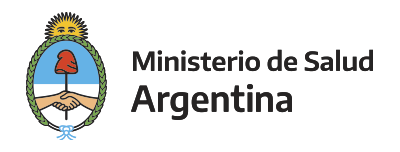Por favor, use este identificador para citar o enlazar este ítem:
http://sgc.anlis.gob.ar/handle/123456789/2674| Título : | Environmental Toxocara spp. presence in crowded squares and public parks from San Juan Province, Argentina: A call for a “One Health” approach | Autor : | Avila, Héctor Gabriel Sandon, Leonardo Anes, Paola Emilce Meli, Sergio Andrés Giboin, Gustavo Adolfo Pérez, Verónica Mirtha Periago, Maria Victoria |
Palabras clave : | Toxocara canis;soil transmitted helminths;One Health;spatial epidemiology;San Juan;Argentina | Fecha de publicación : | 17-feb-2023 | Proyecto: | Fundacion Mundo Sano CONICET |
Resumen : | Introduction: Canine soil-transmitted helminth (cSTH) parasites need specific environmental conditions to complete their life cycle. Toxocara canis and T. cati are the most important zoonotic cSTH, since they are the causal agents of human toxocariasis. Canine STHs are dispersed in feces from infected domestic and wildlife canines. In this study, the presence of STH in canine feces was evaluated in 34 crowded public parks and squares from San Juan Province (Argentina). Methods: Fecal samples were collected during different seasons in 2021–2022 and analyzed by standard coprological methods, including Sheather and Willis flotation and Telemann sedimentation. InfoStat 2020, OpenEpi V. 3.01 and R and RStudio® were used for statistical analysis and QGIS 3.16.10 for mapping. Results: From a total of 1,121 samples collected, 100 (8.9%) were positive for at least one intestinal parasite (IP) and three cSTH species were detected: Toxocara spp., Toxascaris leonina and Trichuris vulpis. The most prevalent cSTH species was T. vulpis (64/1121; 0.057%), while the least prevalent was Toxocara spp. (19/1121; 0.017%). The detection of Toxocara spp. eggs was significantly different depending on the season. The geo-spatial variation of each cSTH per season is described. Discussion: This is the first study in San Juan Province to identify environmental contamination of cSTHs in public areas. The specific localization of areas with the presence of cSTH eggs could provide information to guide strategies to reduce the cSTH infection burden in dogs and promote serological screening of the human population for Toxocara spp. Given the zoonotic nature of Toxocara spp. We hope this information will help to reinforce activities of control programs, focusing on the “One Health” approach. |
URI : | http://sgc.anlis.gob.ar/handle/123456789/2674 | DOI: | 10.3389/fmed.2023.1102396 |
| Aparece en las colecciones: | Parasitosis intestinales en Argentina |
Ficheros en este ítem:
| Fichero | Descripción | Tamaño | Formato | |
|---|---|---|---|---|
| 17. Frontiers in Medicine 2023, 10, 1102396.pdf | 11.77 MB | Adobe PDF | Visualizar/Abrir |
Visualizaciones de página(s)
189
comprobado en 28-dic-2025
Descarga(s)
17
comprobado en 28-dic-2025
Google ScholarTM
Consultar
Altmetric
Altmetric
Los ítems de DSpace están protegidos por copyright, con todos los derechos reservados, a menos que se indique lo contrario.

